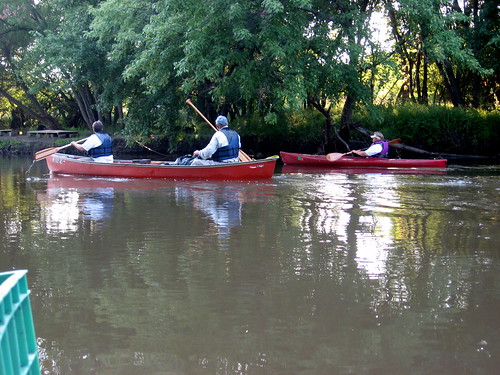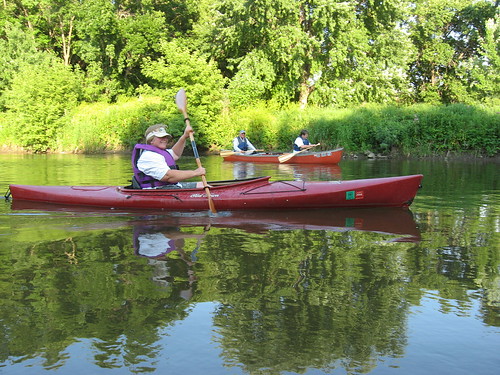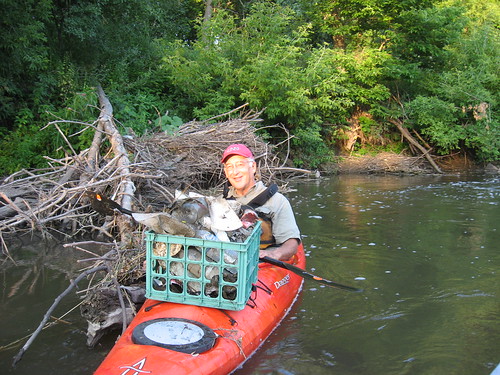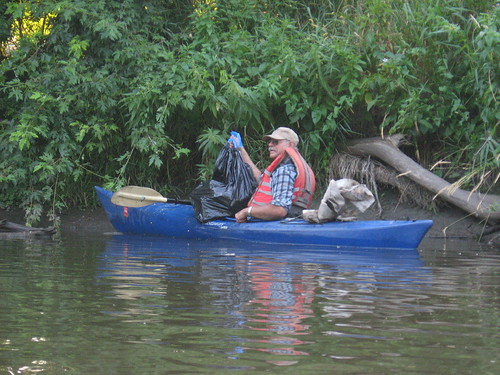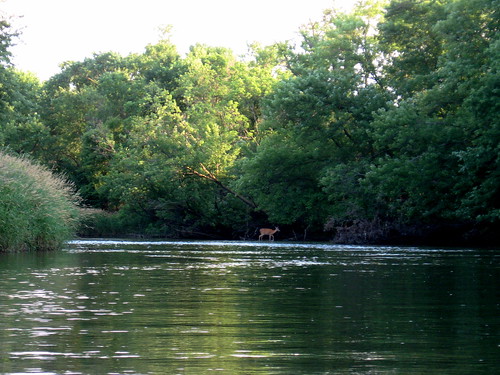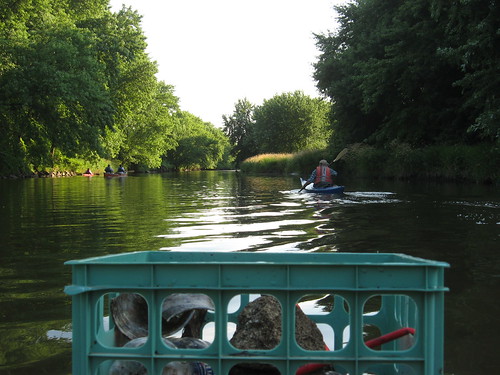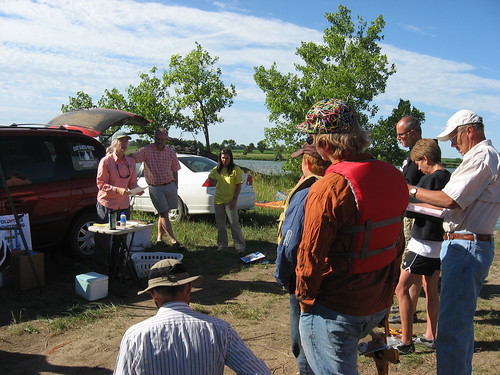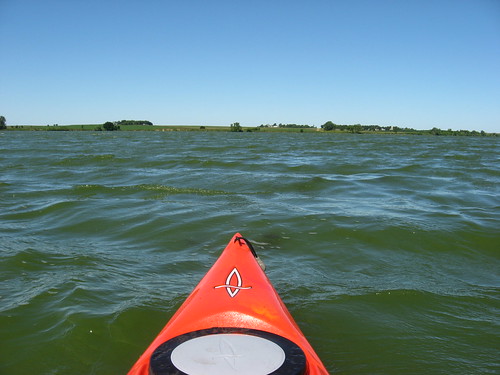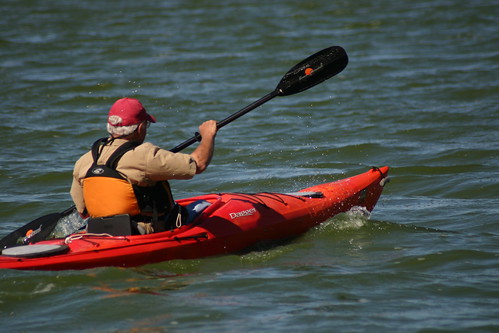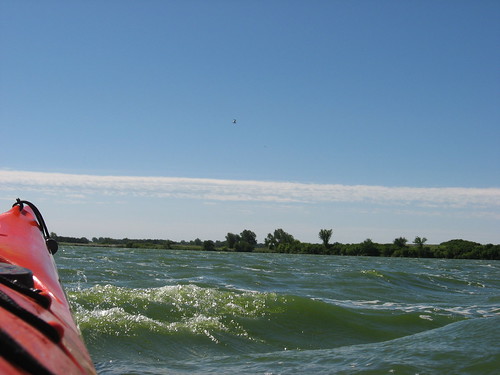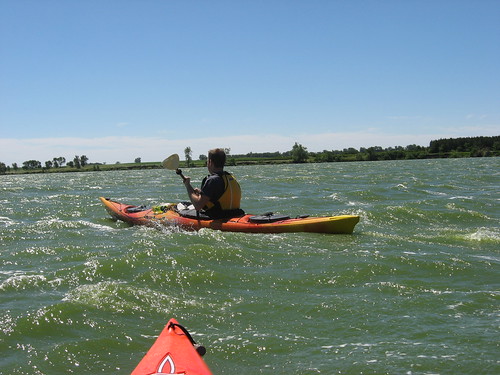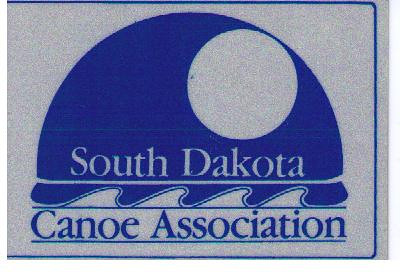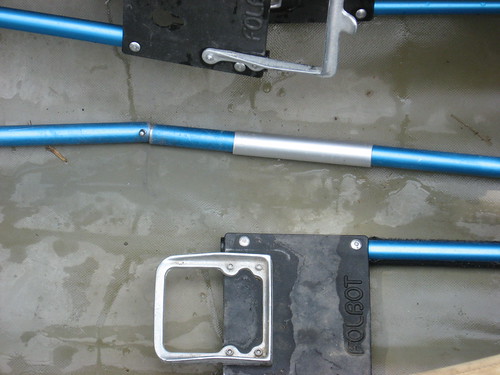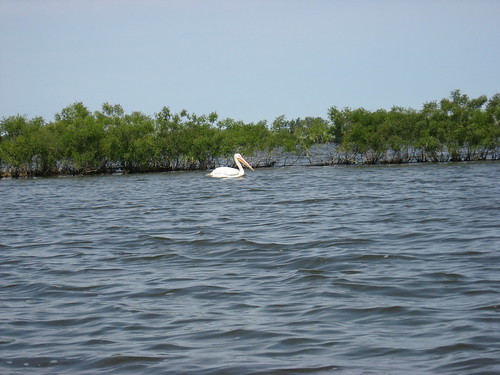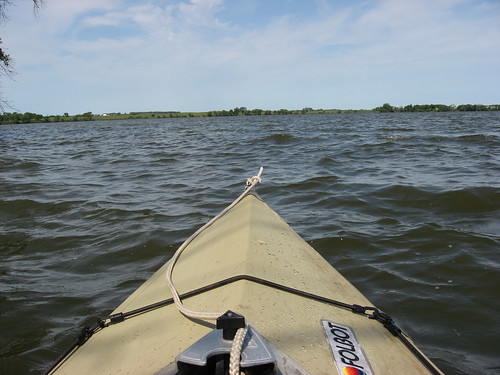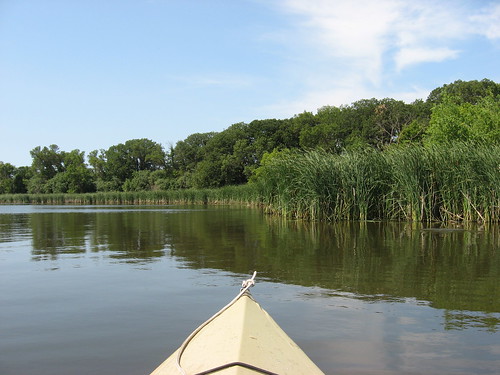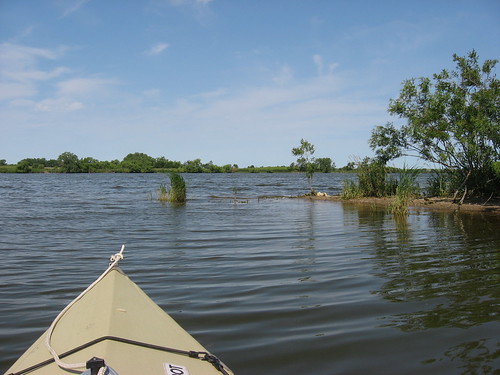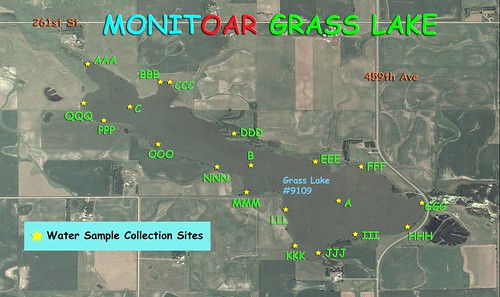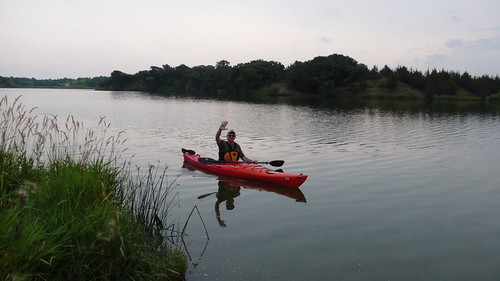
This past week we have hosted a group of people who were here in association with a reunion of my wife’s family and also a celebration of our son’s marriage last summer in Hawaii. Among the guests was our daughter in law’s father, an outdoors kind of guy in his 50s who lives in New Mexico, a serious hiker and former surfer. He was interested and even eager to try out a kayak for the first time. So, the question for me was where to take him out for a first cruise and in which of my three kayaks.

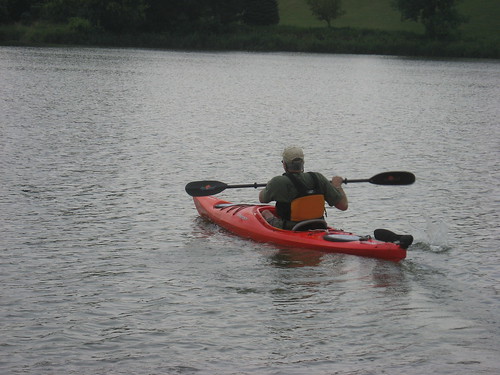
I decided to take him out to Lake Alvin on a weekday morning for his first experience in a kayak. We went to the public access area on the northwestern end of the lake. This site offers an easy launch, a fairly narrow width, and a likelihood of being deserted. There is also likely to be a sheltered area along one of the shorelines. The setting of Lake Alvin tends to reduce the chances of wind sweeping either along or across the surface creating uncomfortable wave action. I decided that a first cruise would be best if he were alone on the water, free to move about on his own volition. Being the captain of your own craft and making your own decisions about speed and course seems one of the attractions of a kayak to me. So, I coached from shore as he practiced the fundamentals and then left him to his own experimentation on his first cruise across and then down the lake.
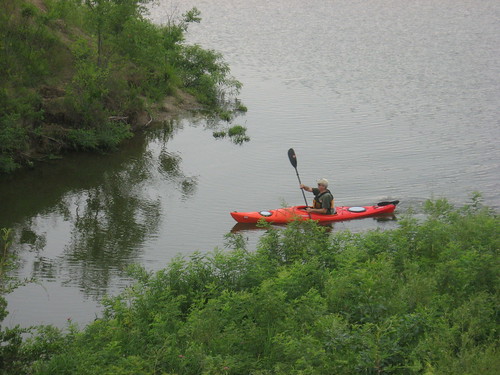
My 13-foot Dagger was the boat of choice, and John set out, easily finding a paddling rhythm that suited him. He found that the pedals for the rudder did not fit his lanky frame, so he just didn’t use them and instead practiced different strokes and leans to help in tracking and turning. Quickly, he seemed to feel confident with the boat and continued first across the lake and then down to the eastern end. He kayaked along the shoreline, into the outlet by the spillway, and back to the dock within the Recreation Area. This first cruise took about an hour, and he felt exhilarated by the experience. After we returned home, he began reading through old copies of Sea Kayaking magazine and thinking of how kayaking would fit into his outdoors life in the desert of New Mexico. Soon, he began talking about a lake that wasn’t too far from his home and how that setting offered great opportunity for exploration.
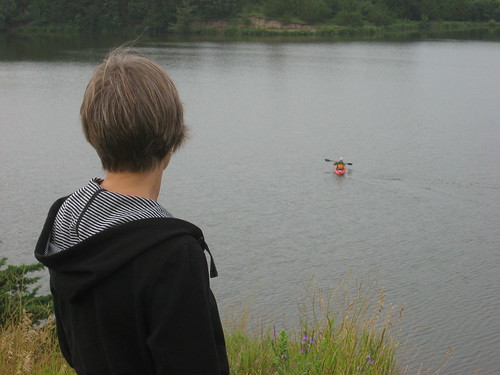

The next day, I took him out to Split Rock Creek to explore the palisades of that waterway extending upstream from the city park in Garretson. This time, I decided to accompany him on his second cruise. He wanted to try out my Folbot, so he assisted me in assembling it. Just as we began the process, a group of about a dozen young children in an organized group led by an adult showed up and gathered around to watch. Remembering my last effort with the Folbot, I regretted not being able to demonstrate irritation with any assembly difficulty. As the object of their attention, I would be inhibited from cursing and expressing frustration with the sleeves that hold the bow and stern assemblies together This time, however, the boat went together without any difficulty and seemed almost a demonstration of ease in assembly.
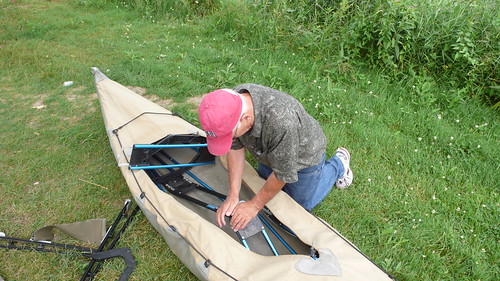
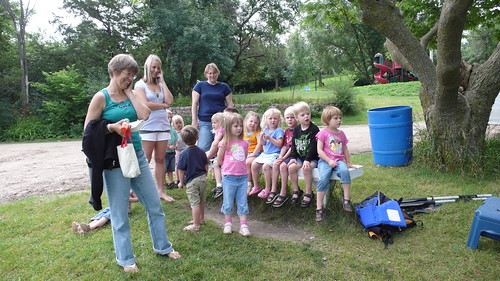
John took the Folbot and I used my Dagger. We set out heading upstream the 1.5 miles or so to the set of rapids that provides a good return point. The cliffs of the palisades are just spectacular, and the scenery of this waterway is perhaps incomparable within the area. He cruised along the rock formations in the Folbot and seemed a veteran paddler on this second cruise for him. On the way back, we went through the arches of the bridge just beyond the launching point and explored Devil’s Gulch.


This experience provided John varied paddling opportunities, first within a lake and then along a moving waterway. He tried out a rigid kayak of a popular size and then a Folbot.
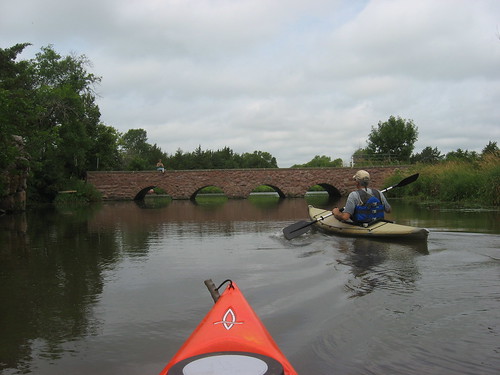
When he left, he had copies of Canoe and Kayaking and Sea Kayaking magazines. He also had lots of photos of him in both crafts and website addresses that could provide tantalizing visions of further exploration on the waterways of New Mexico. His wife was there to observe him as he set off both times. I think that John will begin finding ways to rationalize the purchase of a kayak – maybe even a tandem Folbot to take his wife and/or young son out with him on family adventures! After all, kayaking can save fitness club membership fees, build family relations, prevent heart attacks through tranquility, offer a platform for photography, and provide a means of exploring seldom visited treasures of nature. If he weren’t flying back to New Mexico, perhaps we would have gone out to one of the retail outlets to purchase his first kayak! After all, why delay any further!

